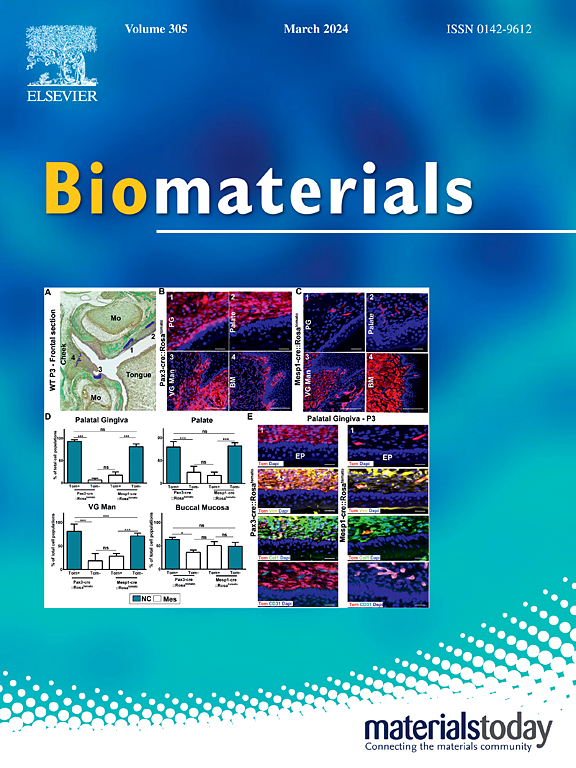Acidity-unlocked glucose oxidase as drug vector to boost intratumor copper homeostatic imbalance-enhanced cuproptosis for metastasis inhibition and anti-tumor immunity
IF 12.8
1区 医学
Q1 ENGINEERING, BIOMEDICAL
引用次数: 0
Abstract
As one of the key tools of biocatalysis, natural enzymes have received extensive attention due to their unique activity. However, the non-selective catalysis and early leakage induced by delivery dependency of natural enzymes can cause side effects on normal tissues. Moreover, although cuproptosis is an emerging tumor-inhibiting programmed cell death, the occurrence of cuproptosis leads to high expression of Cu-dependent lysyl oxidase-like 2 (LOXL2), which promotes tumor metastasis. Herein, in order to intelligently regulate the “OFF-to-ON” catalytic activity of glucose oxidase (a natural enzyme called GOx) and simultaneously inhibit tumor metastasis caused by Cu imbalance, an acidity-unlocked GOx system drug carrier was constructed by co-assembling Cu ions and omeprazole (OPZ) on GOx exposing sulfhydryl and hydrophobic pockets. The GOx activity is significantly inhibited due to the coordination of Cu ions with sulfhydryl groups and the interaction of hydrophobic small molecule OPZ with hydrophobic bags, which results in specificity for tumor cells and ensures the safety of GOx in blood circulation. Meanwhile, dysregulation of intracellular Cu homeostasis that impairs the Cu-dependence of LOXL2 not only inhibits critical signaling during epithelial-mesenchymal transformation (EMT) and extracellular matrix (ECM) remodelling to prevent tumor metastasis, but also exacerbates enhanced cuproptosis induced by tumor metabolic stress, thereby reversing the immunosuppressive microenvironment. This strategy of acidity-unlocked the catalytic function of natural enzymes and LOXL2 activity inhibition provides a novel option for enhancing cuproptosis to inhibit tumor metastasis and anti-tumor immunity.

求助全文
约1分钟内获得全文
求助全文
来源期刊

Biomaterials
工程技术-材料科学:生物材料
CiteScore
26.00
自引率
2.90%
发文量
565
审稿时长
46 days
期刊介绍:
Biomaterials is an international journal covering the science and clinical application of biomaterials. A biomaterial is now defined as a substance that has been engineered to take a form which, alone or as part of a complex system, is used to direct, by control of interactions with components of living systems, the course of any therapeutic or diagnostic procedure. It is the aim of the journal to provide a peer-reviewed forum for the publication of original papers and authoritative review and opinion papers dealing with the most important issues facing the use of biomaterials in clinical practice. The scope of the journal covers the wide range of physical, biological and chemical sciences that underpin the design of biomaterials and the clinical disciplines in which they are used. These sciences include polymer synthesis and characterization, drug and gene vector design, the biology of the host response, immunology and toxicology and self assembly at the nanoscale. Clinical applications include the therapies of medical technology and regenerative medicine in all clinical disciplines, and diagnostic systems that reply on innovative contrast and sensing agents. The journal is relevant to areas such as cancer diagnosis and therapy, implantable devices, drug delivery systems, gene vectors, bionanotechnology and tissue engineering.
 求助内容:
求助内容: 应助结果提醒方式:
应助结果提醒方式:


